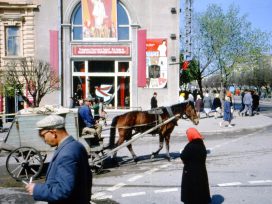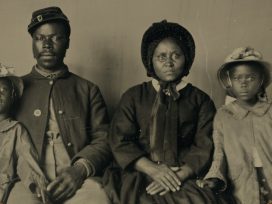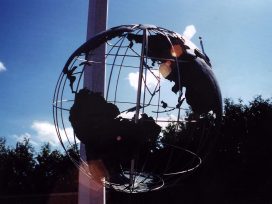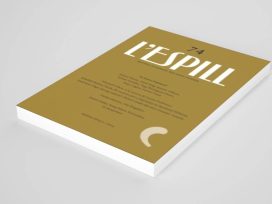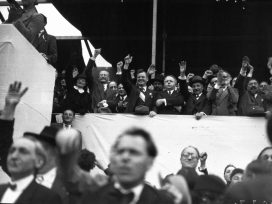Being prepared to die for one’s country has long been the touchstone of nationalism, the Tomb of the Unknown Soldier symbolising the essence of patriotism and national identity. It constitutes the unspoken, but ultimate, sacrifice implied by John F. Kennedy’s overworked injunction most recently deployed by David Cameron when he launched the Tory election manifesto: “Ask not what your country can do for you – ask what you can do for your country.” But as the confused debates about Britishness have indicated over the last decade, concepts of national identity in the UK have been eroding fast and there is now an even greater uncertainty about what it means to serve one’s country, at least in every arena outside sport.
During this period war has become normalised in the political life of the UK. One consequence is that the figure of the soldier is ubiquitous throughout the media, constantly visible in news, military bulletins, films, digital games, forums, art and photography. The image of the flag-draped coffin, however, remains a site of intense struggle, not just over the meanings of military sacrifice but also the perceived value of the war in which the individual soldier “gave” their life. The homecoming parades at Wootton Bassett have demonstrated the volatile mix of political opportunism, public alarm and private grief that has resulted from the routine deaths of soldiers in Helmand Province. Paying close attention to the figure of the soldier as a particular kind of worker-citizen can expose the hidden material and financial resources that are required to commit the country to war. It can also provide a focus for tracking the ideological energy involved in securing public acquiescence, and in marginalising opposition as a form of disloyalty to the national state.
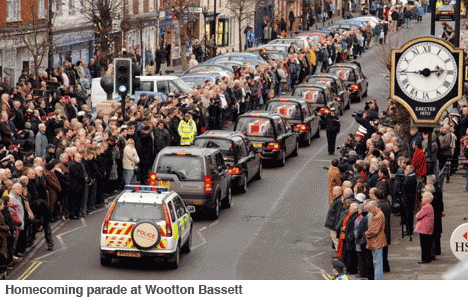
The art of sacrifice
In March this year artist Steve McQueen published a book based on his exhibition “Queen and Country”, a conceptual work that threw the relationship between the soldier and the nation into sharp relief. First launched in Manchester Central Library in 2007, the exhibition consisted of a special oak cabinet with over a hundred pull-out drawers designed to display sheets of facsimile stamps bearing portraits of individual service men and women who had died in Iraq between 2003 and 2006. A caption giving the name, age, rank and date of death of each person ensured that the viewer approached the display as a memorial that was both public and private.
The project attracted widespread publicity as it went on to tour the country, mainly because it asked provocative questions about how UK soldiers should be commemorated in death. It became all the more controversial in face of the Royal Mail’s consistent refusal to issue real commemorative postage stamps, despite a prolonged campaign organised by McQueen and supported by the Art Fund. By inquiring what society might owe the “sacrifice of individuals in defence of our national ideals”, McQueen’s project effectively challenged conventional wisdom about what it means to die for your country during an unpopular war.
It is not always acknowledged that military institutions have social and symbolic functions as well as political ones. The army, for example, is a cumbersome institution, imbued with traditions and organisational memory, but also, like other organisations in the public sector, subject to modern management theory and the demands of employment law. The question of how soldiers are first recruited and then rewarded both reflects and shapes social values, as well as having an impact on ideas about citizenship, belonging and national identity. The last few years have seen significant shifts in Britain’s debates about military work, ranging from recruitment and remuneration, to conditions of service and the “ultimate sacrifice”. By tracking these changes through recent history we gain a different perspective on the relationship between the national state and its armed forces, and are better equipped to address the future of war itself.
Lifeblood
McQueen’s intervention in 2007, with its disarmingly patriotic title, is a good place to start. Early in the course of the British Army’s operations in Basra, the artist accepted a commission to represent an aspect of life “on tour”, although he had no previous experience of army life and culture. He found little to inspire him on the ground, and it was only when he returned home that he thought of a way to question a fundamental issue about the conflict that he felt was being ignored. “I was interested in visualising the soldiers”, he explained, “because soon after I came back from Iraq, those who were losing their lives became just a number”:
I didn’t want a bronze sculpture gathering dust which no one gets to see. This was an opportunity for everyone to have the possibility of participating by posting or opening a letter, and the work would go as far as that letter can travel. Once you put a human face on a situation, it makes it more real. I wanted these men and women to enter the lifeblood of the nation and be remembered.
Both the Ministry of Defence and Royal Mail rejected the idea of commemorating individual soldiers on stamps, giving a variety of reasons why this would not be possible, including a concern about the feelings of the bereaved families. Their refusal to co-operate gave a strong signal that the government was wary of being led into this unpredictable terrain. This may be connected to what Martin Shaw describes as the risk economy of war: “For all western governments in military action, the fundamental problem is to manage the political risks over the period dictated by the electoral cycle. In part … this is a matter of fostering a more favourable perception of war-risks in the minds of voters”. Shaw argues that the risks inherent in war are different from other degrees of political risk because they are concrete: “risks to life, limb, health, social life and well being – to which real people are exposed”. For this reason, governments managing the “risk economy” are not concerned with individual experiences, but with “how these experiences are represented and fed back into the understanding of risk in the minds of policy-makers and the electorates”.
Blair’s attempts to suppress forms of opposition that drew attention to the casualties suffered either by UK troops or Iraqi citizens demonstrate the government’s risk-management policies in practice. In 2005, for example, the activist Maya Evans became the first person to be convicted under Section 132 of the Serious Organised Crime and Police Act, the controversial new law that banned unauthorised protests from taking place within half a mile of Westminster. Her crime? Standing near the Cenotaph in Whitehall and reading out the names of the 97 British soldiers who had died in Iraq. This authoritarian response showed that the tactic of naming individuals killed as a result of illegitimate war was an effective challenge at that point, certainly more powerful than the dwindling demonstrations of frustrated protestors.
In the meantime, some of the parents who had already lost sons and daughters in Iraq had formed Military Families Against the War, a group which combined unforgiving condemnation of the politicians who had engineered the conflict with unwavering support for the young men and women being deployed. When one of the founding members, Reg Keys, whose son Tom was killed along with five others in the Iraqi town of Majar al-Kabir in June 2003, stood against Blair in the 2005 election, he told the prime minister to his face: “I am here to hold you to account for the human and material costs of this war”.
Rose Gentle, another founding member of MFAW, also lost her son, Gordon, in Iraq in 2003. She too stood as a parliamentary candidate in 2005, having initiated a campaign against the Blair administration on the grounds that they had broken the European Convention on Human Rights, which protects the right to life, by failing to ensure that the invasion of Iraq was lawful and justified. “My son didn’t die for Queen and country”, Gentle told the Independent in an interview in 2008. “He died for Blair’s lies.”
Despite these protests, and partly because of the government’s handling of them, the deaths of British soldiers in combat were receiving relatively little media attention at the time when McQueen was working on his project. Between 2003 and 2006 a total of 127 had died in Iraq, and there were to be 47 more casualties during 2007. Meanwhile in Afghanistan, where the operation had been running since 2001, the numbers of fatalities among British troops had stayed in single figures, including zero, between 2001 and 2005. In 2006, however, there were 39, followed by 42 in 2007. There is no doubt that the sense of mounting casualties, including the hundreds of injured personnel who were unable to return to active service, contributed to the pressure to attempt to justify both operations. But there were also other sources of anger and frustration about military life that had been building up over this period.
The question of equipment, or lack of it, was implicated in the deaths of a number of individual soldiers, many of which were subject to legal investigations that would drag on for years. But this issue also highlighted two further ones. First, the rows over the costing and appropriateness of particular kinds of equipment, from essential articles of kit to appropriate vehicles, raised questions about the spending priorities of government, as well as the tenuous nature of the supply chain from defence budgets to distribution. Second, and relatedly, there was a growing concern about the conditions of service under which soldiers were expected to work. Military families, including parents, were kept informed by emails and phone calls about the dangers produced by the lack of mundane items such as boots or protective vests.
Outside the war zones in Basra and Helmand Province there were other issues relating to conditions of service. The investigations into the unexplained deaths of four young trainees in Deepcut, Surrey, between 1995 and 2002, had led to numerous allegations of abuse and cover-ups. Widespread problems with substandard army housing across the country were compounded by concerns about the social welfare of the military families who were bearing the brunt of repeated deployments. And the noise generated by all these issues, from equipment failure in Iraq to lack of support for families at home, could be heard across media outlets, in public meetings and on blogs and forums across the internet. One result of changes in communication technologies was that the sheer amount of information – including claims and counterclaims mounted by authorities under attack – began to prise open a different kind of political space.
By 2007 when “Queen and Country” was launched, soldiers were emerging as particularly symbolic figures, both on and off the battlefield. On the one hand they were workers who had voluntarily applied for jobs in the armed services, aware of the risks inherent in soldiering. On the other, as employees in the public sector, they were entitled to reasonable terms and conditions at the tax-payers’ expense. As the response to the exhibition indicated, the well-being of ordinary servicemen and women could be viewed as a separate issue from the morality or legality of the wars they were expected to fight. McQueen himself acknowledged that his project was regarded as “a good thing” by those who supported the war as well as by those who objected. “It is not pro or anti-war. This work is like a sphere-roll it this way, roll it that way. In the end, it is an art work.”
Mutual obligations
In retrospect 2007 can be seen to have marked a turning point. In September of that year the Independent on Sunday initiated a campaign to address the growing list of concerns by returning to the question of a Military Covenant. Although it may sound like a formal constitutional document, the Covenant is really more of a conceptual pact between the nation and its armed forces.In its opening statement, the newspaper outlined what members of the armed forces had the right to expect under its terms:
in return for putting their lives on the line, British troops, airmen and sailors should be given adequate equipment to do their jobs, the best treatment possible if wounded and the assurance that their families will be looked after if they die in their country’s service.
The campaign was backed by a host of organisations and powerful individuals, including senior military figures and politicians from all parties. One of the most influential charities behind it was the Royal British Legion, which has played a significant role in bringing the conditions of military service to public attention. Since the organisation’s founding rationale was to support former and current members of the armed forces, emotionally as well as practically, it was well placed to intervene on a number of fronts, particularly those that involved commemoration.
The issue of homecoming parades by returning regiments had already become a charged political problem, since it was on these occasions that soldiers were made aware of the public’s lack of interest and even hostility. In October 2007 General Sir Richard Dannatt, who was at that time Chief of the General Staff, had begun to complain that the lack of popular support was affecting the morale of troops returning from deployment. The Daily Mail reported that a returning unit in Abingdon, Berkshire, had been greeted by only a handful of onlookers after a thanksgiving service in the town, followed by a march through the empty main streets. It quoted the Tory Defence spokesman, Gerald Howarth, as saying:
If people seem completely uninterested – which they are – then they will have no real comprehension of what the Armed Forces do. They watch what’s happening in Afghanistan and Iraq on the television and then go about their lives, detached from what is happening to our soldiers. These guys deserve our support.
In spring 2007 the planes repatriating the coffins of soldiers killed in Iraq and Afghanistan started to land at RAF Lyneham, an airbase in Wiltshire; and the route from there to the special armed forces pathology lab at Oxford’s John Radcliffe Hospital led through the middle of Wootton Bassett. Later that year, members of the local branch of the RBL took a decision to line the street to pay formal respect to the hearses as they passed. Although it was to be several months before the town became a byword for honouring the war dead, the RBL set a precedent for galvanising members of the public to follow suit. As one resident told the press two years later: “The rights and wrongs of the conflict don’t even come into it. The town is just a place where we show respect to the war dead”. Meanwhile, by December 2007, a later homecoming parade in Abingdon was greeted by crowds of flag-waving people, a transformation clearly brought about by political intervention as well as media attention – for which the Sun claimed all the credit.
The third event that took place in 2007 was the formal launch, in October, of Help for Heroes (H4H), a charity aimed at raising money for wounded soldiers. A few months earlier, Bryn and Emma Parry had decided to set up the fund-raising support network in order to campaign on behalf of the rising numbers of young men and women who had been injured in service. They received enthusiastic support from a range of organisations and individuals that was broadly similar to those who had signed the petition to honour the Military Covenant. In addition to prominent serving and former military personnel, the roll call of celebrity patrons ensured that well-known figures from sport, media, music and other realms of public life were ready to associate themselves with the campaign. Help For Heroes rapidly became a focal point for fund-raising activities across the country, expanding at a rate that revealed the latent anxiety about the effects of continuous war.
It was in the context of all these initiatives to bring the plight of soldiers to public attention, particularly through the Military Covenant campaign, that the government was obliged to act. On 12 December 2007 it was announced that the government had taken the step of issuing a comprehensive review of military conditions of service. In addition, the prime minister had commissioned an investigation into the “National Recognition of our Armed Forces”, designed to address the urgent question of civil-military relations.
“Increasingly separate”
It had become clear that despite these expressions of respect and admiration for the armed forces, public opinion about the wars themselves remained decidedly mixed. And the combination of all these problems meant that retaining a trained workforce had become a significant problem, for the army in particular. Rather than concede the unpopularity of the wars in Iraq and Afghanistan, the government retreated to higher ground to persuade the electorate of its patriotic duties. When the initiative on “Recognition” reported back in May 2008, Gordon Brown foregrounded its findings by stating: “the military, in the opinion of almost all those with whom we have spoken, have become increasingly separated from civilian life and consciousness”. The report elaborated four main causes of this growing gulf between the body of the nation and its military organs, a list which conspicuously omitted the prospect of public hostility to New Labour’s wars.
The first was demographic. As the generation who saw active service in the 1939-45 war was passing, fewer people “than at any time since 1914” now had any direct experience of or family connection with the Armed Forces. The second reason was of a different order: members of the Forces had not worn uniforms in public for many years, even where it was permitted, because, the report suggested, there had been a “failure to appreciate the scale of damage done because of the IRA threat in the 1970s and 1980s”. Thirdly, military installations had remained closed to the public, guarded by armed personnel at heavily fortified gates. One result was that the public had fewer opportunities to see displays of work performed by military institutions, or to view their facilities, whether for reasons of security, health and safety or cost. Finally, the merger of regiments drawn from local regions had inevitably had a negative impact on the relationships between the Army and the communities with which they were traditionally connected.
The recommendations detailed in the report ushered in a new era of public relations work aimed at repairing the accumulated damage. It proposed a radical new programme of outreach with civil society, based on the fundamental principle that the military uniform was to be treated with respect. Detailed suggestions were made on how to improve communications with media, schools, politicians and business leaders; on the importance of providing more systematic support for homecoming parades and public award ceremonies; and of facilitating greater levels of military support for civil operations, such as search and rescue missions. In an effort to win public approval for these attempts to mend the civil-military relationship, the report’s authors suggested that the government should incorporate the little-known Veterans Day, which had been introduced in 2006, into an annual public holiday to be known as Armed Forces Day.
The combination of these sweeping proposals, with their continued attention to military pomp and ceremony, is proof that the risk economy of war had altered significantly since 2003. The authoritarian suppression of sympathy for the unfortunate soldiers and their families was replaced by a re-activated language of patriotic sacrifice and heroism: “it is vital for our serving men and women, especially those engaged in difficult and dangerous overseas campaigns, to know that the whole of Britain understands and appreciates the work that they do in their name”, declared Brown as he endorsed the recommendations in the report. Launching the first Armed Forces Day on 28 June 2009, Veterans Minister Kevan Jones repeated the same theme: “The armed forces are a force for good in terms of protecting us and this day is an opportunity for the public to say thank you to those men and women and their families for the sacrifices they have made.”
By incorporating the rather un-British Veterans Day into this more spectacular and newsworthy occasion, the government hoped to emulate the militarised rituals of national identity it had observed with envy across the Atlantic. Interviewed at the first AFD parade in Kent, Chief of Defence Staff Air Chief Marshal Jock Stirrup was asked by a BBC reporter why those who volunteered to join the armed forces should get “special treatment”, since they knew what the risks were when they joined up. His reply reiterated the formulaic pact of reciprocity between the national community and its armed forces:
The people that we have, bearing great risks, running great dangers in operational theatres and sometimes, alas, making terrible sacrifices, are not doing it for themselves. They are doing it for this nation and for the people of this nation. It’s this nation that they are serving and I think that is something pretty special and I think it demands something pretty special in return, from the nation. I think the nation understands that and agrees with that.
Stirrup’s comments, heard above the sound of marching bands and crowds enjoying a day out, represented an exercise in managing civil-military relations at the most symbolic and overtly patriotic level. But concealed behind this performance of national consensus was the message that those who did not agree were voluntarily placing themselves on the outside. The subsequent reaction to Islam4UK’s protest at returning troops in Luton, and their threat to hold a counter-demonstration in Wootton Bassett, indicated just how explosive this territory could be, especially when it was being claimed by a group of postcolonial citizens in the name of an unrepentant Islamism.
The post-Diana effect
The British public has now been feeling the full force of the MoD’s media-military operations for almost a decade, and the rhythm of six-month deployments has become a normative aspect of national life. In 2010, however, there are signs that the sympathetic support galvanised for the soldiers performing “heroic sacrifices” on behalf of the nation is proving counter-productive, from a military point of view. Echoes from the sandy plains of Helmand Province have spoken of a “post-Diana reaction to fatalities”, and of a pervasive and resilient culture of pessimism that is undermining soldier morale.
But as the equilibrium between sympathy, apathy, hostility and support moves this way and that, new forms of outsourcing the local risks of war appear on the horizon. NATO forces now operate alongside, and in conjunction with, a vast array of development agencies, NGOs, privatised security firms and contractors. Thousands of former soldiers are currently employed in a rapidly expanding sector of militarised labour that is not governed by the legal and social norms that bind the institutions of national armed forces. Furthermore, as Paul Hirst discussed in his book War and Power in the 21st Century, a range of conditions are transforming conventional notions of armed intervention.
Hirst predicted that within the first third of the new century, American forces would contain relatively low levels of personnel. Capable of being moved rapidly to any part of the world, the new, integrated, forces “would not expose the human beings involved with them to the threat of death to any great degree”. And these predictions clearly also apply to European forces. The RAF already employs US-made Reaper drones in Afghanistan, for example, operated from a base in Nevada. Hirst also suggested that we would see the formation of a “post-heroic” military: technology would replace soldiers and war would cease to be a combat, with the result that, in future, the use of force might well operate as a form of “pest control”.
It is not hard to glimpse the prospect of a “post-heroic” military suggested by Hirst, and to see how it might also become post-national – permanently deployed in distant combat and utterly unaccountable to the demands of electorates. In the US there has been relatively little comment on the news that the Special Operations Forces are currently deployed in 75 countries, up from 60 last year. And, while David Cameron is calling for “the military [to be] front and centre of our national life once again”, the impeding defence review promises a radical restructuring of the British armed forces.These developments make it all the more urgent for opponents of war to monitor the way that society treats its soldiers, and to be fully engaged with what it expects from them in return. But in the end, as Shaw argues: “the challenge is to accept the full logic of the value that western society places on human life and to seek alternatives to war”.
